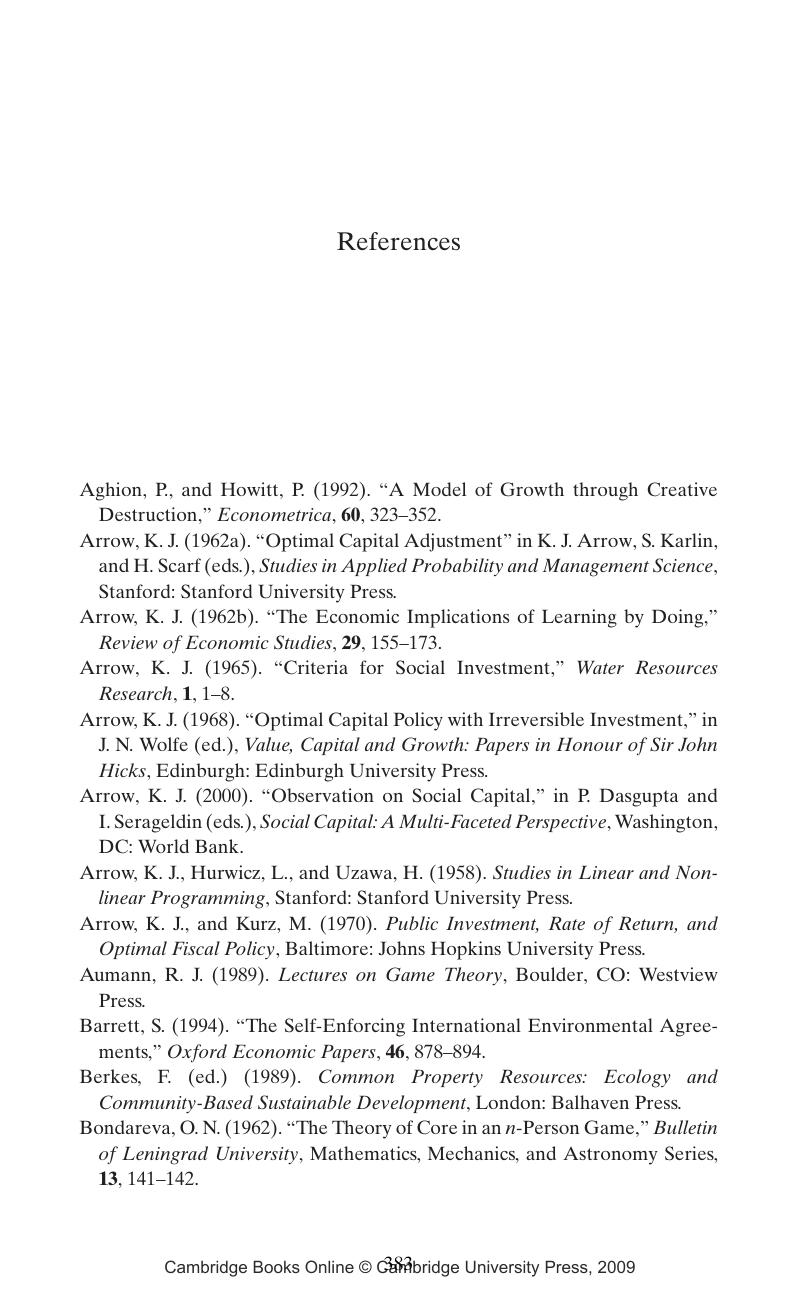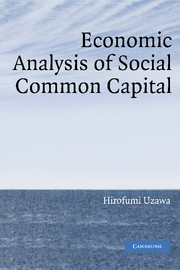Book contents
- Frontmatter
- Contents
- List of Figures
- Preface
- Introduction: Social Common Capital
- 1 Fisheries, Forestry, and Agriculture in the Theory of the Commons
- 2 The Prototype Model of Social Common Capital
- 3 Sustainability and Social Common Capital
- 4 A Commons Model of Social Common Capital
- 5 Energy and Recycling of Residual Wastes
- 6 Agriculture and Social Common Capital
- 7 Global Warming and Sustainable Development
- 8 Education as Social Common Capital
- 9 Medical Care as Social Common Capital
- Main Results Recapitulated
- References
- Index
- References
References
Published online by Cambridge University Press: 18 December 2009
- Frontmatter
- Contents
- List of Figures
- Preface
- Introduction: Social Common Capital
- 1 Fisheries, Forestry, and Agriculture in the Theory of the Commons
- 2 The Prototype Model of Social Common Capital
- 3 Sustainability and Social Common Capital
- 4 A Commons Model of Social Common Capital
- 5 Energy and Recycling of Residual Wastes
- 6 Agriculture and Social Common Capital
- 7 Global Warming and Sustainable Development
- 8 Education as Social Common Capital
- 9 Medical Care as Social Common Capital
- Main Results Recapitulated
- References
- Index
- References
Summary

- Type
- Chapter
- Information
- Economic Analysis of Social Common Capital , pp. 383 - 392Publisher: Cambridge University PressPrint publication year: 2005



